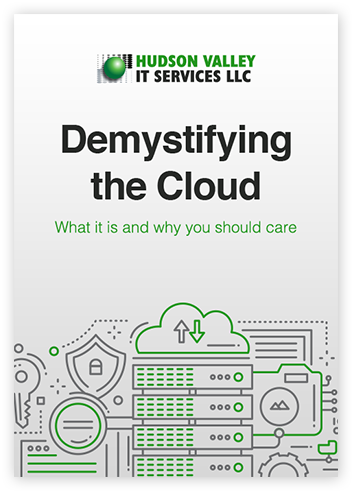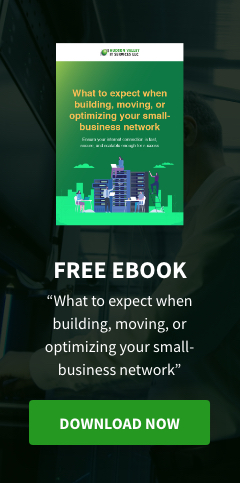For many small businesses in Middletown, New York, cloud migration isn’t easy because of the looming threat of a data breach. Given the frequency of data breaches everywhere and their huge costs to businesses, an average of $3.92 million according to an IBM study, the fear is justified.
The truth is cloud security has come a long way since the cloud’s inception. It’s a safe place for your data if you know more about it.
What is cloud security?
Cloud security refers to measures employed to protect data and applications in a cloud environment. It normally involves protections against unauthorized access and data breaches, distributed denial-of-service (DDoS) attacks, malware, and other threats.
Cloud security should not be confused with cloud-based security, which refers to a Software-as-a-Service (SaaS) delivery model of cybersecurity. Cloud-based security, sometimes called Security-as-a-Service (SECaaS), can either be a single solution such as antivirus software or a suite of security solutions hosted and delivered via the cloud.
On the other hand, cloud security will largely depend on the cloud model that hosts data — private, public, and hybrid. Each environment is fundamentally different, with its own advantages, vulnerabilities, and limitations. Successfully implementing cloud security starts with knowing the distinctions.
But whichever model you choose, cloud security remains a shared responsibility between you and the vendor of the cloud resources. However, the level of responsibility varies with the cloud model.
Download our free eBook!
Interested in moving to the cloud? Read our free eBook, Demystifying the Cloud: What it is and why you should care for information on how it works and why you need it.
What are the types of cloud security?
Public cloud
A public cloud environment is owned and managed by a third party, while its resources like processing power and data storage are made available to multiple clients. Some well-known public cloud services are Amazon Web Services, Microsoft Azure, and Google Cloud.
Although vendors like Amazon, Microsoft, and Google have resources that outmatch most on-premises security, their resources go mostly to securing their cloud’s underlying structure. They don’t have control over how you use or configure the service, what data you migrate, and who you give access to.
And while the vendor supports the client’s security measures with its infrastructure, the burden of securing data, as well as compliance, ultimately goes to the client. In other words, the strength or weakness of the cloud environment that you use depends on the configuration and access policies you implement. Note that most cloud-based data breaches occur because of weak configurations, not malware.
Private cloud
A private cloud, on the other hand, is dedicated to a single organization. Its infrastructure is owned by that company. Securing a private cloud environment is more costly compared to a public cloud but offers more opportunities for upgraded security.
Unlike the public cloud which is maintained by a vendor, the private cloud offers the owner full access or visibility of their data, as well as its underlying physical infrastructure. This allows the owner to apply security controls that best suit it, whether that be:
- Data classification – prevents certain types of data from entering or leaving the cloud service
- Data loss prevention – automatically disables access and transfer of data when suspicious activity is detected
- Collaboration controls – manages file and folder permissions
- Encryption – prevents unauthorized access to data once stolen
- User access control – ensures only certain users access your cloud data
- Device access control – blocks unauthorized devices from access
Hybrid cloud
The hybrid cloud model offers the best of both worlds. After all, it is a combination of on-premises and public cloud, offering the customizability and flexibility of the former and the convenience of the latter.
There’s a reason enterprises choose the hybrid model and the security it offers. For one, it offers more options for your organization’s needs. Some companies might use the on-premises data center for most of their operations, relegating less essential data to the public cloud. For instance, an organization might keep critical workloads on-premises, while applications, emails, and customer relationship management (CRM) stay in the cloud.
Your organization can create a secure environment that takes into account the distinct requirements of a public cloud and a data center under your control. For instance, your organization can secure data stored in the public cloud with scalable measures that match its needs as it grows. That's because you don't need to upgrade resources such as hardware, manpower, and security solutions, unlike in a private cloud setup.
Meanwhile, the on-premises component can remain stable as the public cloud scales. That gives you full access and control over data and infrastructure, while allowing you to customize security measures as you would in a private cloud model.
Working in the cloud allows your business to be nimble, efficient, and cost-effective. Hudson Valley IT Services’ Cloud Services can move certain aspects of your day-to-day computing to a secure cloud to boost your productivity and reduce your operating costs. Find out more about safely leveraging the cloud by calling us.
Like This Article?
Sign up below and once a month we'll send you a roundup of our most popular posts



